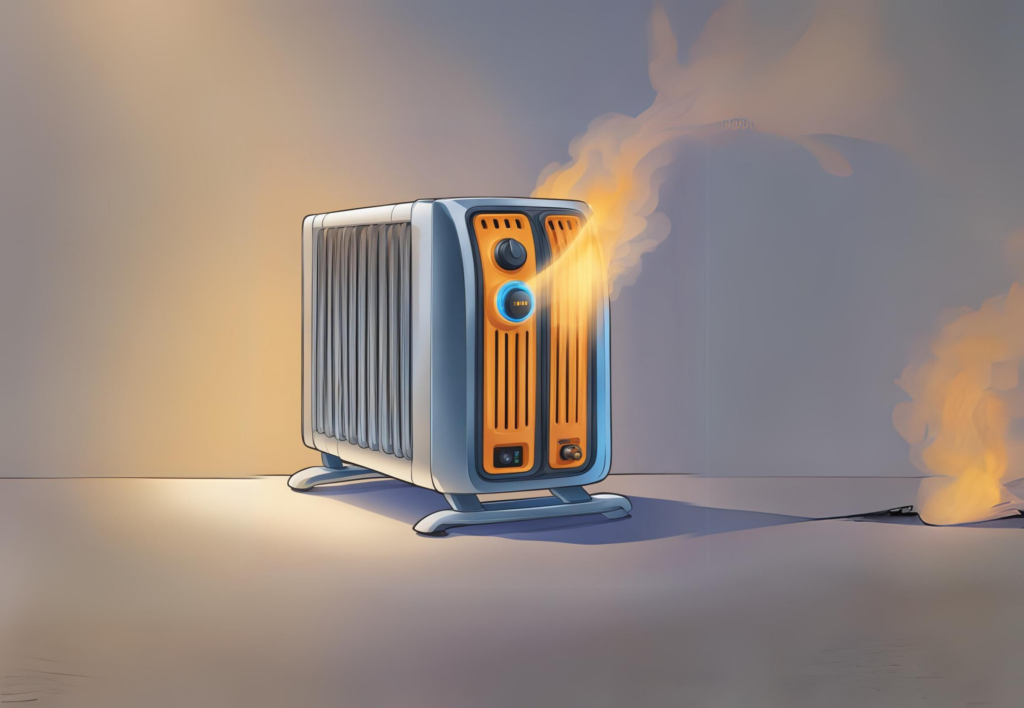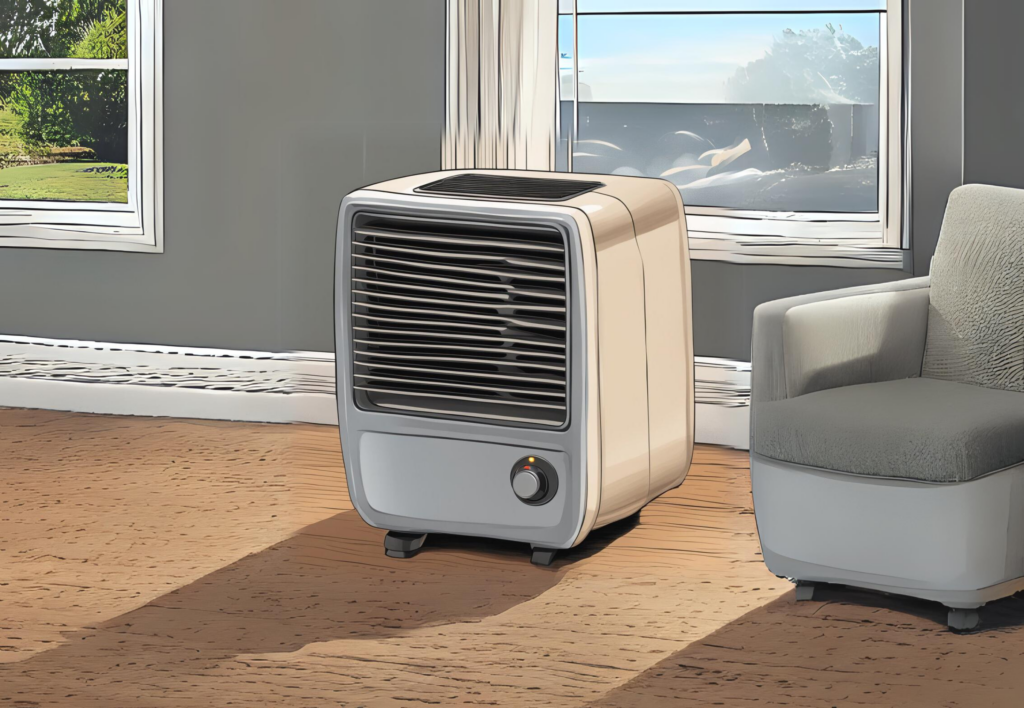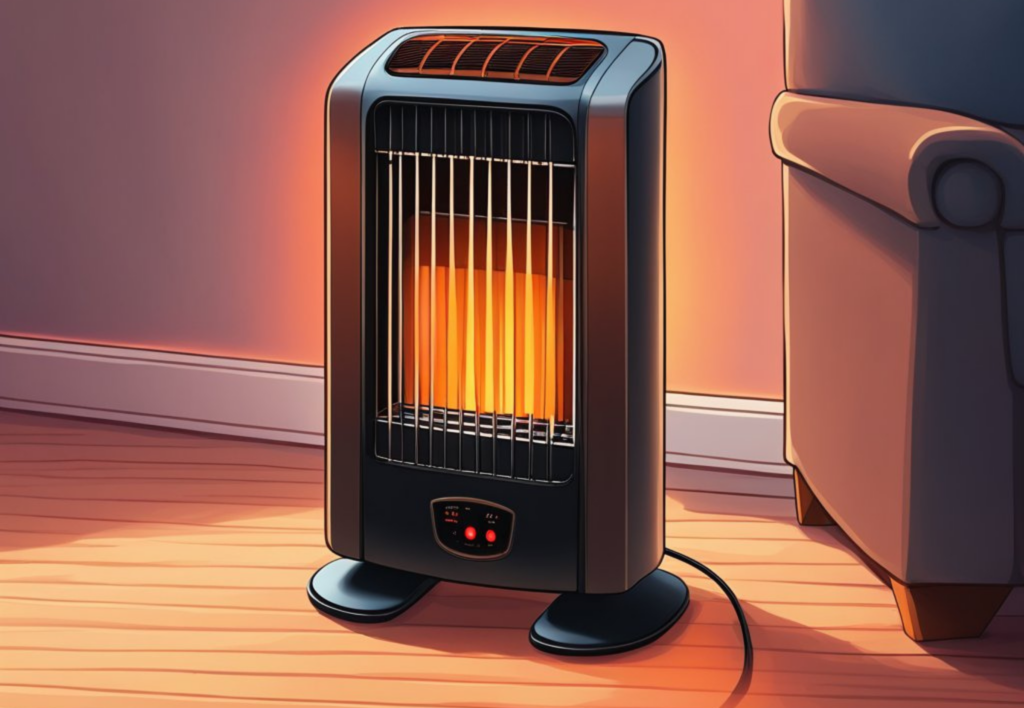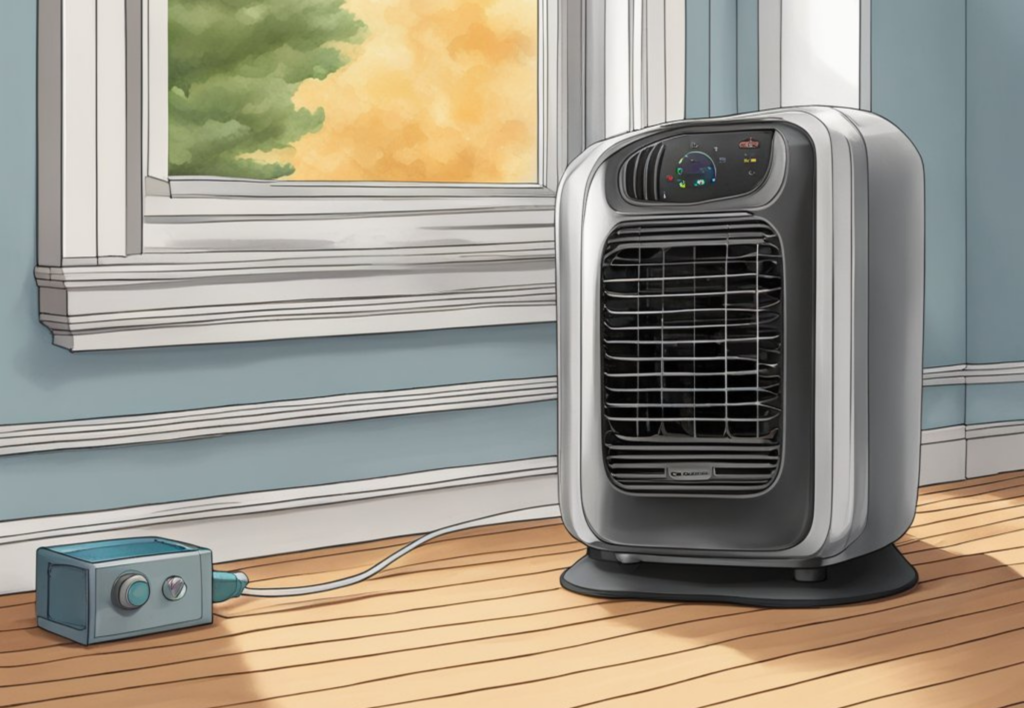Does a Space Heater Dry Out the Air? (Use a Radiant Heater To Minimize Dryness)
As winter draws near and the temperature drops, many households turn to space heaters for that much-needed warmth.
However, a commonly asked question lingers: Does using a space heater dry out the indoor air?
Space heaters primarily warm the air, leading to an increase in the air’s capacity to hold moisture. This can result in a decrease in relative humidity, making the air feel drier. However, the absolute moisture content remains unchanged. While all space heaters can affect perceived dryness, radiant heaters have a lesser impact on relative humidity compared to convection heaters.
Let’s delve into this question, uncovering the science behind space heaters, their effect on indoor humidity, and potential solutions for those dry winter days.
How do space heaters affect humidity levels and make the air dry?
At its core, the operation of a space heater is to provide warmth by increasing the room’s temperature.
As the air heats up, its capacity to hold moisture increases, which means the relative humidity – the amount of moisture the air holds relative to the maximum amount it can hold at a particular temperature – can decrease.
This doesn’t mean the total moisture in the room is reduced, but rather that the air feels drier because of the increased temperature.

Absolute vs. Relative Humidity
To begin, it’s essential to distinguish between two important concepts: absolute humidity and relative humidity.
- Absolute Humidity: This refers to the actual amount of moisture present in the air, usually expressed in grams of water per cubic meter. It represents the total moisture content, irrespective of temperature.
- Relative Humidity (RH): Expressed as a percentage, RH indicates the current amount of moisture in the air compared to the maximum amount it could hold at that temperature. As temperature rises, the air’s capacity to hold moisture also increases.
How Space Heaters Influence Perceived Dryness
When a space heater warms a room, it raises the temperature, increasing the air’s capacity to hold moisture. If the absolute humidity (actual moisture content) remains constant and the temperature rises, the relative humidity will decrease.
For instance, let’s assume a room has an absolute humidity of 7 grams of water per cubic meter at 20°C (68°F) with a relative humidity of 50%.
If the room’s temperature is raised to 25°C (77°F) by a space heater, the air’s moisture-holding capacity at this new temperature is higher. If no additional moisture is added, the same 7 grams of water per cubic meter now constitutes a lower relative humidity, say around 40%.

Potential issues related to dry air in the home
When we continually expose ourselves to dry indoor air, several health and comfort issues may arise:
- Dry skin: One of the most common complaints during colder months is dry, itchy skin. Heated, dry indoor air can accelerate the loss of moisture from our skin, leading to flakiness, itching, or even exacerbation of conditions like eczema.
- Sore throats: Our respiratory tracts need moisture to function correctly. Dry air can dry out the mucus membrane lining of the throat, leading to a scratchy, sore sensation.
- Nose bleeds: The nasal passages, much like the throat, can dry out in low humidity conditions. This can lead to vulnerability and increased risk of nosebleeds, especially for those already predisposed.
What kind of space heater won’t dry out the air?
While all space heaters can potentially lower relative humidity due to the reasons mentioned earlier, some types have a lesser impact on indoor moisture levels.
Radiant heaters, for instance, warm up objects and people directly in their path without significantly altering the surrounding air’s moisture content.
Radiant space heaters such as infrared space heaters and halogen space heaters won’t dry out the air as much as other space heater types because they warm up objects and people directly without really warming up the surrounding air – leaving the humidity relatively unchanged.
On the other hand, convection heaters warm the air, which can lead to a more noticeable drop in relative humidity.

How different types of space heaters affect humidity
- Radiant Heaters: These heaters, including infrared and halogen heaters, produce heat through radiation. They warm up objects and people directly without significantly warming the surrounding air. As a result, the moisture content of the air remains relatively unchanged, and there’s minimal impact on relative humidity. This makes them an excellent choice for those concerned about dry indoor air.
- Oil-Filled Radiators: Oil-filled heaters warm the air through natural convection. While they do heat the air, they do so gently and without a fan. This slower, gentler process has a less pronounced effect on relative humidity compared to forced-air convection heaters.
- Micathermic Heaters: A blend of radiant and convection heating, these heaters have a panel that emits both radiant and convective heat. Their effect on humidity is generally less pronounced than fan-driven convection heaters but may still affect perceived dryness to some extent.
- Fan Heaters (Forced Air Heaters): These heaters use a fan to blow air over a heating element, warming the air and circulating it around the room. This process can lead to more rapid changes in temperature and potentially more noticeable drops in relative humidity.
- Gas and Propane Heaters: Combustion-based heaters like propane space heaters produce water vapor as a byproduct, which can increase humidity. However, indoor use of combustion-based heaters requires proper ventilation to prevent the accumulation of harmful gases, which can also let in dry outside air, potentially neutralizing this effect.
Recommendations
When seeking a space heater that minimally affects indoor air moisture levels:
- Choose Radiant Over Convection: As detailed above, radiant heaters have a lesser effect on relative humidity.
- Seek Heaters with Humidity Controls: Some advanced models may come with built-in hygrometers and can either adjust their output or alert the user when humidity levels drop too low.
- Consider Using a Humidifier: If maintaining humidity is essential, consider using a humidifier in conjunction with your space heater. This combination can provide warmth without compromising comfort.

Tips to prevent dry air when using a space heater
To combat the drying effect of space heaters and maintain comfortable indoor humidity levels, consider the following tips:
- Use a humidifier: A humidifier can add moisture back into the air, compensating for the drying effect of the heater. Place it in the same room as the space heater for optimal results.
- Regularly check humidity levels: Invest in a hygrometer, a device that measures indoor humidity. Aim to keep indoor humidity levels between 30% and 50% for the best comfort and health benefits.
- Water bowls: Placing a bowl of water near the heater can help. As the water heats up, it evaporates, adding moisture to the air.
- Plants: Indoor plants can act as natural humidifiers. As plants release moisture through transpiration, they can help maintain healthier indoor humidity levels.
- Ventilation: Occasionally, allow fresh air to circulate by opening a window or door. This can balance indoor and outdoor humidity levels, especially if outdoor air is less dry.
Check Out Our Complete Guide to Space Heaters!
If you enjoyed this post, check out our complete guide to space heaters for more information on space heater types, safety features, troubleshooting common issues, and how to choose the right space heater for your needs!
Let Us Know How We’re Doing!
Did this expertly prepared resource answer your question?
Do you have another question about home maintenance, home improvement projects, home appliance repair, or something else?
Get more information, send in questions and keep the discussion going by contacting the I’ll Just Fix It Myself company customer service team at at 1-800-928-1490 or Email us at [email protected]
